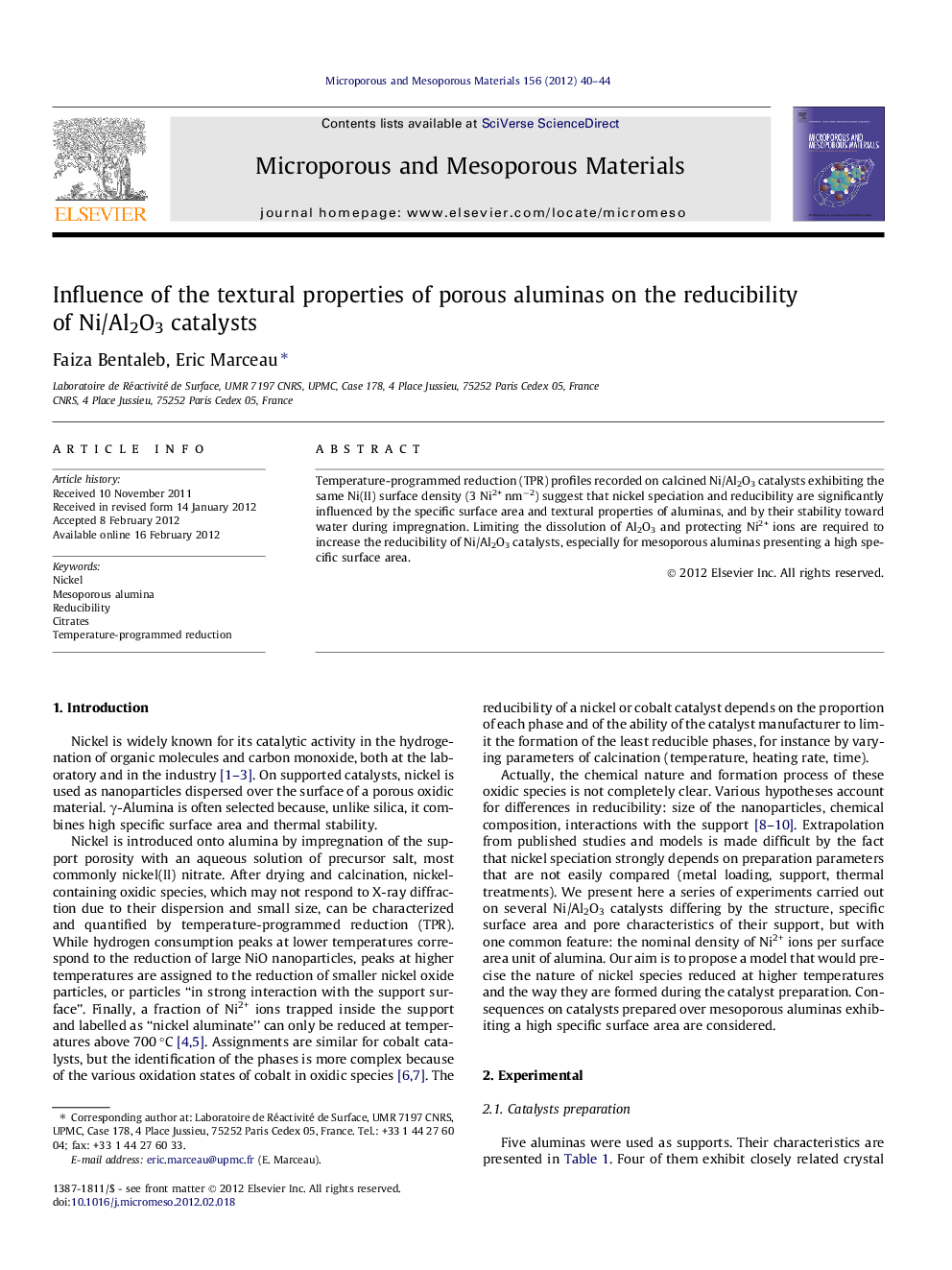| Article ID | Journal | Published Year | Pages | File Type |
|---|---|---|---|---|
| 74211 | Microporous and Mesoporous Materials | 2012 | 5 Pages |
Temperature-programmed reduction (TPR) profiles recorded on calcined Ni/Al2O3 catalysts exhibiting the same Ni(II) surface density (3 Ni2+ nm−2) suggest that nickel speciation and reducibility are significantly influenced by the specific surface area and textural properties of aluminas, and by their stability toward water during impregnation. Limiting the dissolution of Al2O3 and protecting Ni2+ ions are required to increase the reducibility of Ni/Al2O3 catalysts, especially for mesoporous aluminas presenting a high specific surface area.
Graphical abstractTPR profiles recorded on Ni/Al2O3 catalysts differing by their textural properties suggest that the reactivity toward H2 of nickel species reduced at higher temperatures is influenced by the formation of mixed nickel–aluminum phases during impregnation, enhanced in the case of mesoporous supports exhibiting a high specific surface area.Figure optionsDownload full-size imageDownload as PowerPoint slideHighlights► Aluminas specific surface area and pore size influence nickel oxide reducibility. ► Reducibility of all nickel species is low on mesoporous alumina. ► Alumina stability toward water is a key factor for nickel reducibility. ► Nickel citrate as an effective precursor for easier reduction on mesoporous alumina.
